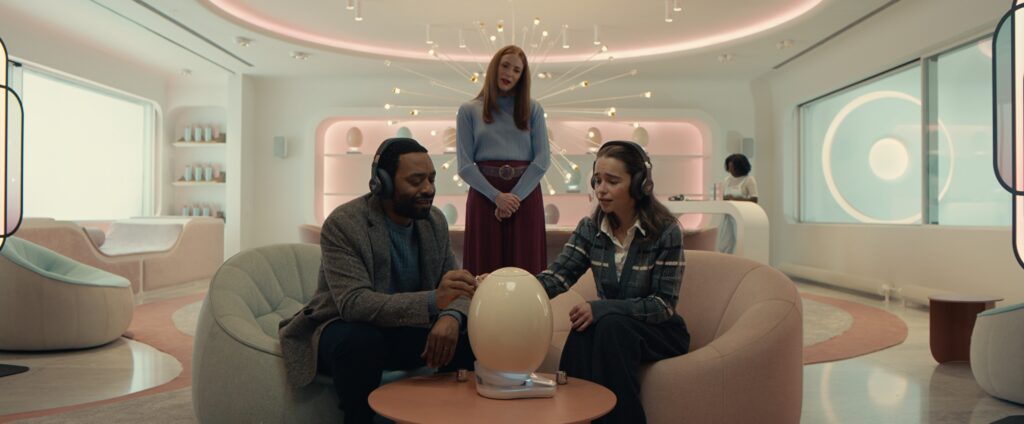You’ve probably noticed that TV series and films feature a disproportionate number of male characters. The dearth of women onscreen has been proven by study after study. Those studies, and the researchers conducting them, will no doubt benefit from the launch of a new tool that can determine how long actresses are onscreen for.
The New York Times reports that this tool will employ “video- and audio-recognition technology, along with algorithms, to identify gender, speaking time, and additional details about characters presented in films, television shows, and other media.”
The software will be known as the Geena Davis Inclusion Quotient (or GD-IQ), and is the result of a collaboration between The Geena Davis Institute on Gender in Media, at Mount Saint Mary’s University, and Google.org, which funded the project.
The tool will save hours and hours on content analysis. As the NYT writes, GD-IQ will “speed up and automate the painstaking data-collection process that researchers use to study representation, a key initiative in recent years as the entertainment industry has begun to focus on equity onscreen.”
“The research is a tool to help inspire change,” said Madeline Di Nonno, chief executive of the Geena Davis Institute. “It’s not meant to criticize; it’s meant to have the facts so that content creators can be aware and learn from it.”
The software took two years to develop, and has the potential to analyze a 90-minute film in 15 minutes “with a level of accuracy that would be difficult for a researcher to match.”
“It’s almost like adding totally different eyes and ears to look at data quickly, with the latest machine advances,” said Dr. Shri Narayanan, an engineering professor who worked on the technology behind the GD-IQ.
The first research conducted via the GD-IQ, titled The Reel Truth: Women Aren’t Seen or Heard, considered the 200 top-grossing non-animated films in 2014 and 2015 (the source doesn’t specify whether or not the tool is capable of analyzing animated films).
Here are some highlights from The Reel Truth:
- Male characters received two times the amount of screen time as female characters in 2015 (28.5 percent compared to 16.0 percent).
- In 2015, male characters spoke two times as often as female characters in the top box office movies (28.4 percent compared to 15.4 percent).
- The gender gap in speaking time is even larger in films led by men. Male characters spoke three times more often than female characters (33.1 percent compared to 9.8 percent) in films with male leads.
- In films with female leads, male characters spoke about the same amount as female characters (23.9 percent compared to 26 percent). In other words, in films with male leads, male characters dominate the speaking time, but in films with female leads, men speak as much as women.
- In films with both male and female co-leads, male characters spoke far more often than female characters. Male characters spoke 25.5 percent of the time compared to 16.7 percent for female characters.
Dr. Martha Lauzen of San Diego State University’s Center for the Study of Women in Television & Film found that women comprised 33 percent of all speaking characters in the top-grossing 100 films of 2015, and 30 percent in 2014. USC Annenberg’s Media, Diversity, & Social Change Initiative, led by Dr. Stacy Smith, reported that “out of 4,370 speaking or named characters evaluated, 68.6 percent were male and 31.4 percent were female across the 100 top‐grossing films of 2015,” and in 2014, 28.1 percent of speaking characters were female.
“As the software is fine-tuned, the people behind it hope that it can be applied to issues beyond gender,” the NYT writes. “Julie Ann Crommett, whose title at Google is entertainment industry educator in chief, envisions it being used to promote careers in the STEM fields, by ‘looking at perceptions of computer science and engineers onscreen, and how we shift those to be more diverse to more people.’” While that seems like a fascinating and worthy application of the tool, we’d also like to see if it can be used to analyze data related to age and race, or perceptions of LGBTQ characters onscreen.
“This is such an extraordinary bias-busting tool,” Crommett noted. “A really powerful way to look at the whole picture.” We look forward to the tool’s potential to provide more nuanced analysis of the kind Crommett envisions.
For example, what are women onscreen saying when they do speak? Researchers like Dr. Lauzen and Dr. Smith — and those at Geena Davis’s own institute — don’t just look at the number of female characters, but also how they are portrayed. They explore if women onscreen are being sexualized or depicted in leadership positions, for instance.
For more information on the innovative tool and the tech behind it, head over to The New York Times. You can view The Reel Truth — which includes helpful infographics — at the Geena Davis Institute on Gender in Media’s website.







